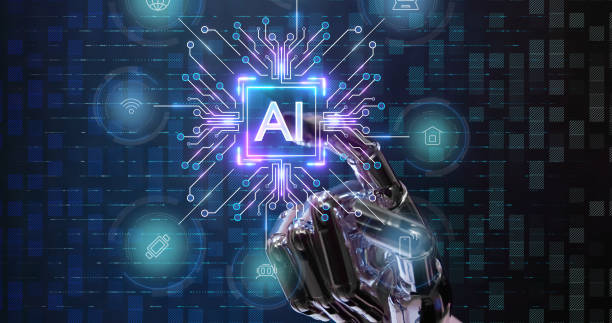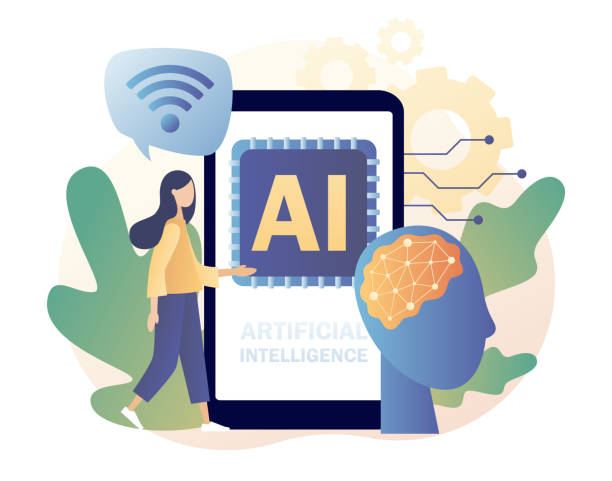What is an AI Robot and How Does it Work?
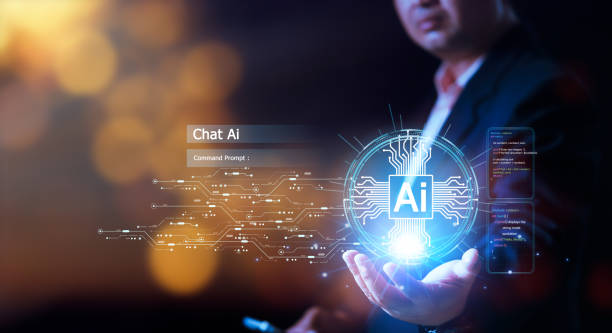
#Artificial Intelligence (AI) Robot is a combination of two important technologies: robotics and artificial intelligence.
In simple terms, AI robots are machines that can perform tasks that usually require human intelligence.
These tasks can include learning, reasoning, problem-solving, natural language understanding, and computer vision.
Artificial intelligence allows robots to sense their surroundings, process information, and make decisions based on it.
These decisions can include navigating a complex environment, identifying objects, answering questions, and even performing creative tasks.
The way an AI robot works is that sensors first collect information from the environment.
This information can include images, sounds, tactile data, and other types of data.
Then, this information is sent to a central processing unit (CPU) or a graphics processing unit (GPU) that executes artificial intelligence algorithms.
These algorithms can include neural networks, machine learning algorithms, and other artificial intelligence techniques.
The algorithms process information and make decisions.
These decisions are then sent to the robot’s actuators, which cause the robot to move, perform an action, or provide a response.
AI robots have applications in various industries.
In the manufacturing industry, they are used to automate repetitive and dangerous tasks.
In the service industry, they are used to provide customer service, answer questions, and perform clerical tasks.
In medicine, they are used to diagnose diseases, perform surgeries, and provide healthcare.
AI robots are advancing rapidly and are expected to play a more important role in our lives in the future.
Are you tired of having visitors to your online store but no sales? Rasaweb solves your main problem with professional online store design!
✅ Significant increase in sales with targeted design
✅ Flawless user experience for your customers
⚡ Get a free consultation!
Main Components of an AI Robot
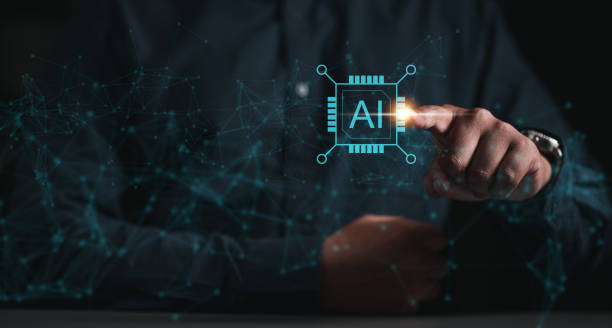
An #AI robot consists of several main components that work together to enable intelligent tasks.
These components include:
- Sensors Sensors collect information from the surrounding environment.
There are different types of sensors, including cameras, microphones, tactile sensors, temperature sensors, and position sensors. - Processors Processors process the information collected by the sensors and make the necessary decisions.
Processors can be CPUs, GPUs, or other types of processors. - Artificial Intelligence Algorithms Artificial intelligence algorithms are a set of instructions that tell the robot how to process information and make decisions.
There are different types of artificial intelligence algorithms, including neural networks, machine learning algorithms, and reasoning algorithms. - Actuators Actuators control the robot’s movements.
Actuators can be motors, pumps, valves, or other types of devices. - Power Supply The power supply provides the electricity needed to operate the robot.
These components work together to enable an AI robot to perform complex tasks.
For example, an AI robot can identify objects using cameras and computer vision algorithms.
Then, it can learn how to manipulate these objects using machine learning algorithms.
Finally, it can move its arm and move objects using motors.
Advances in any of these components can lead to improved performance of AI robots.
For example, the development of more accurate sensors and more advanced artificial intelligence algorithms can help robots better understand their surroundings and make better decisions.
Types of AI Robots and Their Applications

There are different types of AI robots, each designed for specific applications.
Some of the most common types of AI robots include:
- Industrial Robots These robots are used in factories and other industrial environments to automate repetitive and dangerous tasks.
- Service Robots These robots are used in hospitals, hotels, restaurants, and other service locations to provide services to customers.
- Military Robots These robots are used in the military to perform reconnaissance, transportation, and combat tasks.
- Space Robots These robots are used in space to explore planets, repair satellites, and perform other space tasks.
- Personal Robots These robots are used in homes to help people with everyday tasks.
The applications of AI robots are very broad and are increasing rapidly.
Some of the most common applications of AI robots include:
- Automation AI robots can be used to automate repetitive and dangerous tasks.
- Customer Service AI robots can be used to provide customer service, answer questions, and solve problems.
- Healthcare AI robots can be used to diagnose diseases, perform surgeries, and provide healthcare.
- Education AI robots can be used to provide personalized training and help students learn.
- Entertainment AI robots can be used to provide entertainment, play with children, and interact with people.
Below is a sample table of industrial robot applications
| Industry | Application |
|---|---|
| Automotive | Welding, painting, assembly |
| Electronics | Component assembly, quality testing |
| Food | Packaging, sorting |
| Pharmaceutical | Drug production, quality control |
Due to rapid technological advancement, the applications of AI robots are expected to become much broader in the future.
Advantages and Disadvantages of Using AI Robots

Using #AI robots has several advantages and disadvantages.
Some of the most important advantages of using AI robots include:
- Increased Productivity AI robots can perform tasks faster and more accurately than humans.
- Reduced Costs AI robots can reduce labor costs and other expenses.
- Improved Safety AI robots can perform dangerous tasks and prevent humans from getting injured.
- 24/7 Availability AI robots can work around the clock and provide services without needing rest.
- Increased Accuracy and Quality AI robots can perform tasks with higher accuracy and quality than humans.
In contrast, some of the disadvantages of using AI robots include:
- High Initial Cost Buying and installing AI robots can be expensive.
- Need for Expertise Setting up and maintaining AI robots requires expertise and technical knowledge.
- Job Loss The use of AI robots can lead to job loss for humans.
- Ethical Issues The use of AI robots can create various ethical issues, such as accountability for robot decisions.
- Limitations AI robots cannot yet perform all the tasks that humans can perform.
Considering these advantages and disadvantages, deciding whether to use an AI robot should be done carefully and based on the specific needs and conditions of each organization or individual.
It is necessary to conduct a thorough review of the advantages and disadvantages before taking any action to make the right decision.
Are you worried about the low conversion rate of your online store and not having the sales you want?
Rasaweb is your specialized solution for having a successful online store.
✅ Significant increase in conversion rates and sales
✅ Professional and user-friendly design to satisfy customers
⚡ Are you ready for a transformation in online sales? Get a free consultation!
Challenges and Future of AI Robots

#AI robots face several challenges that need to be addressed to realize their full potential.
Some of the most important of these challenges include:
- Developing More Advanced AI Algorithms Current AI algorithms are still limited in many areas and there is a need to develop more advanced algorithms.
- Improving Sensors Current sensors are still limited in collecting accurate and complete information from the surrounding environment and there is a need to improve sensors.
- Increasing Reliability AI robots need to be more reliable and function correctly in different conditions.
- Reducing Costs The cost of AI robots needs to be reduced to make them more accessible to more organizations and individuals.
- Solving Ethical Issues Ethical issues related to the use of AI robots need to be resolved so that their use is done responsibly.
Despite these challenges, the future of AI robots is very bright.
It is expected that in the future, AI robots will play a more important role in our lives and will be used in various industries.
Some predictions regarding the future of AI robots include:
- Increased use of AI robots in the manufacturing industry AI robots can be used to automate tasks, reduce costs, and improve quality.
- Expanding the use of AI robots in the service industry AI robots can be used to provide customer service, answer questions, and solve problems.
- Developing Personal AI Robots Personal AI robots can be used to help people with everyday tasks, provide entertainment, and interact with people.
- Using AI Robots in Space AI robots can be used to explore planets, repair satellites, and perform other space tasks.
AI robots are advancing rapidly and are expected to play a more important role in our lives in the future.
Machine Learning and Its Role in AI Robots

Machine Learning is an important sub-branch of artificial intelligence that plays a vital role in the performance of AI robots.
Machine learning allows robots to learn from data and improve their performance without explicit programming.
In other words, instead of programmers defining all possibilities and answers in advance, the robot uses machine learning algorithms to identify patterns in the data and make decisions based on them.
In AI robots, machine learning is used in various fields:
- Computer Vision Robots can process images and videos using machine learning algorithms and identify objects, people, and scenes.
- Natural Language Processing Robots can understand human language using machine learning algorithms and answer questions, execute commands, and generate texts.
- Motion Control Robots can learn how to move in different environments and find optimal paths using machine learning algorithms.
- Decision Making Robots can make better decisions in different situations using machine learning algorithms.
For example, an intelligent robotic vacuum cleaner can learn a map of the house and find optimal cleaning paths using machine learning.
Also, it can identify obstacles using computer vision algorithms and prevent collisions with them.
AI robots, by leveraging machine learning, are able to provide a more intelligent and adaptive performance to the environment.
Neural Networks and Their Application in AI Robots
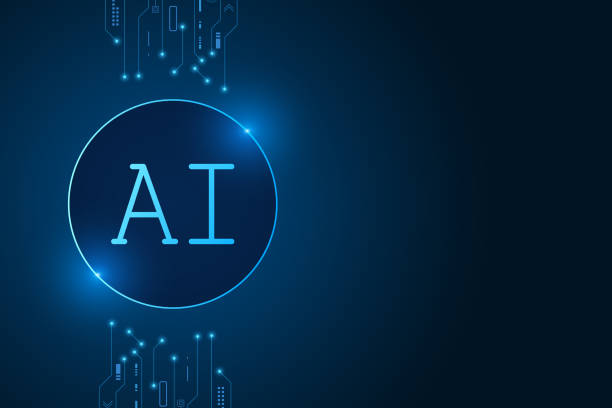
Neural Networks are one of the most important tools of machine learning that have many applications in AI robots.
Neural networks are inspired by the structure of the human brain and consist of multiple layers of nodes (neurons) that are connected to each other.
Each node performs a simple mathematical operation and transfers the result to the next nodes.
In AI robots, neural networks are used in various fields:
- Pattern Recognition Neural networks can be used to recognize patterns in data.
For example, they can be used to recognize faces, recognize sounds, and recognize handwriting. - Prediction Neural networks can be used to predict future outcomes.
For example, they can be used to predict stock prices, predict weather, and predict traffic. - Control Neural networks can be used to control complex systems.
For example, they can be used to control robots, control aircraft, and control cars.
For example, a self-driving car can process camera images using neural networks and identify objects, people, and traffic signs.
Then, it can control the steering wheel, brakes, and accelerator using control algorithms and drive safely on the street.
AI robots, by leveraging neural networks, are capable of performing more complex tasks that require processing large amounts of data and recognizing subtle patterns.
| Type of Neural Network | Application in AI Robots |
|---|---|
| Convolutional Neural Networks (CNN) | Computer Vision, Image Recognition |
| Recurrent Neural Networks (RNN) | Natural Language Processing, Speech Recognition |
| Deep Neural Networks (DNN) | Motion Control, Decision Making |
Generative AI and Its Impact on Robots
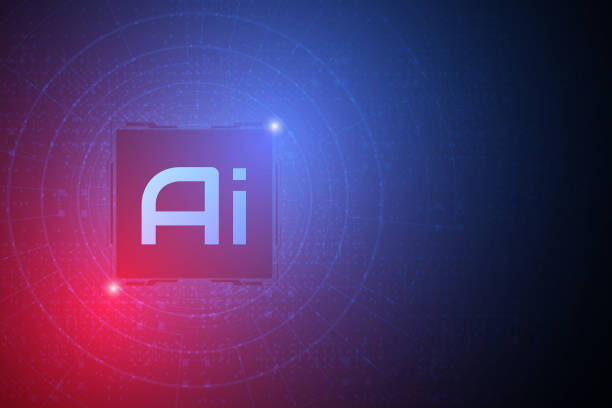
Generative AI is an emerging branch of artificial intelligence that focuses on generating new data.
This data can include images, text, music, and other types of data.
Generative AI uses machine learning algorithms to learn from existing data and then uses this knowledge to generate new data that is similar to the training data.
The impact of generative AI on AI robots is significant.
Some of the most important of these impacts include:
- Generating Creative Content Robots can use generative AI to create creative content such as poetry, stories, music, and art.
- Designing New Products Robots can use generative AI to generate new designs for products, buildings, and other objects.
- Simulating Real Environments Robots can simulate real environments using generative AI and be trained and tested in these environments.
- Improving Human-Robot Interaction Robots can better understand human language and provide more appropriate responses using generative AI.
For example, an artist robot can create paintings using generative AI that are similar to the works of famous artists.
Also, an architect robot can use generative AI to present new designs for buildings that are both beautiful and efficient.
AI robots, by leveraging generative AI, are capable of performing tasks that previously only humans were capable of.
Are you tired of your company’s website not meeting your expectations? With Rasaweb, design a professional website that showcases the true face of your business.
✅ Increase attracting new customers and sales leads
✅ Increase the credibility and trust of your brand with the audience
⚡ Get a free website design consultation!
Ethical Considerations in the Development and Use of AI Robots

The development and use of AI robots bring important ethical considerations that need to be addressed.
Some of the most important of these considerations include:
- Accountability Who is responsible for the decisions and actions of an AI robot? Is the robot’s manufacturer responsible or the user who uses it? These questions need precise answers.
- Privacy AI robots often collect large amounts of data.
How can the privacy of individuals be protected against the misuse of this data? - Bias AI algorithms may be biased based on their training data.
How can bias in AI robots be prevented? - Transparency How can the performance of AI robots be made more transparent so that people can understand how they make decisions?
- Security How can AI robots be protected against cyber attacks and misuse?
For example, if a self-driving car causes an accident, who is responsible? Is the robot’s manufacturer responsible or the driver who was in control of the robot at that moment? These questions show that ethical considerations in the development and use of AI robots are very important and should be considered.
It should be noted that AI robots are advancing rapidly and it is necessary to address ethical issues related to them at the same time as the development of this technology.
Guide to Buying and Using AI Robots
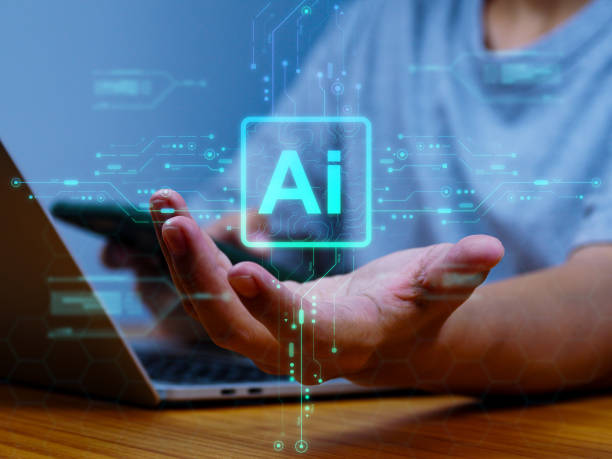
If you are planning to buy and use an AI robot, you should pay attention to a few important points:
- Determine Needs First of all, you must accurately determine your needs.
What tasks do you want to entrust to the robot? What are your expectations of the robot? - Research and Review Before buying, research different types of AI robots and review the features, advantages, and disadvantages of each.
- Choose a Reputable Seller Buy your robot from a reputable seller that provides good after-sales service and support.
- Training and Learning Before using the robot, read its instructions carefully and learn how to work with it.
- Maintenance and Care Maintain and care for your robot regularly to increase its useful life.
For example, if you are planning to buy a smart robotic vacuum cleaner, you should pay attention to factors such as the size of the house, type of flooring, suction power, charging time, and smart capabilities.
Also, before use, you should read the robot’s instructions carefully and learn how to work with it.
AI robots can make your life easier, but to use them optimally, you must pay attention to the above points.
Frequently Asked Questions
| Row | Question | Answer |
|---|---|---|
| 1 | What is an AI robot? | An AI robot is a machine capable of understanding, reasoning, learning, and solving problems, and can perform complex tasks with relative autonomy. |
| 2 | What are the most important applications of AI robots? | The main applications include industrial production, customer service (chatbots), medicine and surgery, self-driving transportation, space exploration, and military affairs. |
| 3 | What is the main difference between an AI robot and a regular robot? | A regular robot only follows programmed instructions, while an AI robot can learn from data, make decisions, and adapt to new environments. |
| 4 | How do AI robots learn? | They learn through machine learning algorithms (such as deep learning, reinforcement learning) and processing vast amounts of data, identifying patterns, and improving their performance. |
| 5 | Can AI robots have emotions? | Currently, AI robots do not have real emotions in the human sense. They can mimic or recognize emotions, but they do not understand or experience them. |
| 6 | What are the current limitations of AI robots? | The limitations include the need for a lot of data, the inability to understand abstract concepts, the lack of real creativity, ethical issues, and the challenges of generalizability in new environments. |
| 7 | What is the role of artificial intelligence in the development of humanoid robots? | Artificial intelligence helps humanoid robots to walk, maintain their balance, understand the environment around them, interact with humans, and perform complex tasks. |
| 8 | How is the future of AI robots predicted? | It is predicted that AI robots will become smarter, more autonomous, and capable of performing more complex tasks in daily life and industry, and their interaction with humans will increase. |
| 9 | Can AI robots replace all human jobs? | It is unlikely that all human jobs will be replaced. Robots take on many repetitive and dangerous tasks, but jobs that require creativity, empathy, and ethical judgment will remain. |
| 10 | What ethical and social challenges are raised with the expansion of AI robots? | Challenges include issues related to privacy, data security, ethical decision-making by robots, the impact on employment, and accountability in case of errors. |
And other services of Rasa Web Advertising Agency in the field of advertising
Smart UI/UX: Transform SEO ranking improvement with the help of marketing automation.
Smart Sales Automation: An effective tool for managing campaigns by optimizing key pages.
Smart Content Strategy: A combination of creativity and technology to increase site visits through Google Ads management.
Smart Social Media: A combination of creativity and technology for digital branding through precise audience targeting.
Smart Conversion Rate Optimization: A fast and efficient solution for user interaction with a focus on attractive user interface design.
And more than hundreds of other services in the field of internet advertising, advertising consulting, and organizational solutions
Internet advertising | Advertising strategy | Advertorial report
Resources
What is an AI robot and how does it work?
,What is Artificial Intelligence (AI)?
,What is Artificial Intelligence? A comprehensive review of the application, advantages, and disadvantages of AI
,AI Robots: A comprehensive guide, applications, advantages, and disadvantages
? To have a strong presence in the digital world and promote your business, Rasaweb Afrin, a leading digital marketing agency, is with you. With our comprehensive services, including SEO-optimized website design, we bring your business to the top.
📍 Tehran, Mirdamad Street, next to the Central Bank, South Kazerun Alley, Ramin Alley No. 6
“`

